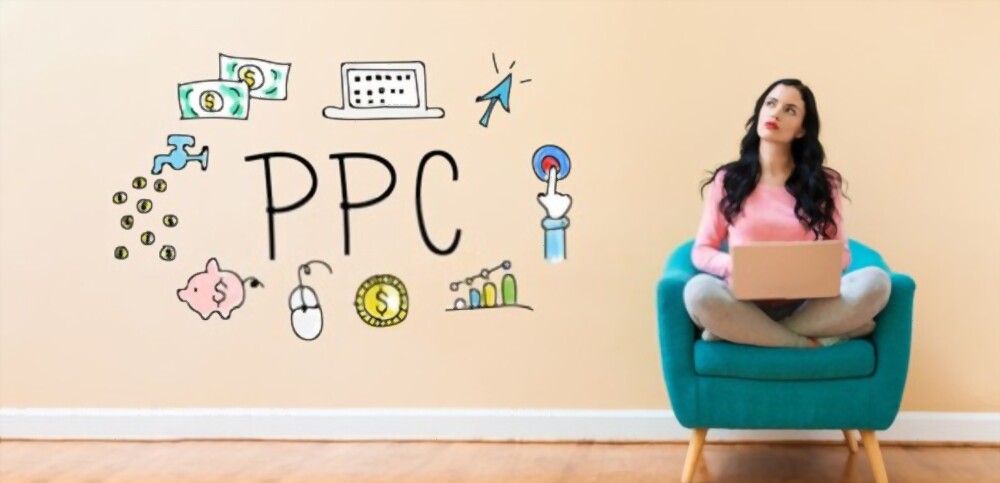What Is Pay Per Click? A Complete Guide for Beginners

Pay per click is the method of internet advertising where advertisers pay a publisher for each time a user clicks on a specific ad. A bid is made by the advertiser and the publisher agrees to the bid. The pay per click model is popular amongst many websites and is used to drive traffic to their site.
Cost per click
Cost per click is one of the most critical metrics in digital marketing. It can help you determine the effectiveness of your advertising campaigns. In addition, it allows you to measure how many customers you reach through your paid advertising. This information will help you make more accurate forecasts.
Cost per click can be calculated for an individual ad or for an entire campaign. The cost of each click is divided by the number of clicks. There are several factors that can influence the cost of your ads.
One of the main reasons that CPC rates vary is competition. A lot of advertisers want to rank high and are willing to pay more for each click.
Another reason is that niche industries have more competition. Often, the more sites that bid for a particular keyword, the higher the CPC will be.
The cost of the ad also varies by geographic location. If you advertise in a country where the average cost is low, you can expect lower CPCs. On the other hand, if your industry has a large audience, you may pay more for each click.
A key factor that can influence your cost per click is the quality of your ad. Your Quality Score is a combination of your ad’s relevancy to a search query and the expected click-through rate. Low Click-Through Rates can reduce your quality score, and result in higher CPCs.
If your ad is not triggering conversions, it’s likely because you’re bidding on keywords that are irrelevant to your product. To optimize your user experience, constantly monitor your Search Terms report to remove irrelevant keywords.
You can use tools like Google AdWords to bid on specific keywords. These ads appear on the search engine results page, and advertisers pay for every click.
Targeting specific audiences
You can increase your ROI and save a lot of money using audience targeting. It helps you identify your buyer’s needs and wants on the web. As well as boosting your PPC performance. There are a number of ways to go about this.
One of the most popular ways to target specific audiences is through Google search ads. These ads appear to those who have already expressed interest in your company or products. They are also a good way to drive incremental conversions.
Another useful tool is the Audience Insights report. This explains how you can best use the various audience features on the Google AdWords platform. The list can be filtered by a number of categories, including age, geographic location, and demographics. Using this information, you can build custom audiences.
A remarketing list is another great way to target specific audiences. Using data collected through cookies, you can build an audience of visitors who have previously visited your site. Some of these visitors may have already made a purchase. But excluding those people from your campaigns isn’t always the best strategy.
In addition to providing a large number of options, the Google Customer Match audience allows you to further segment your leads. This allows you to remarketing to the people who have already converted, as well as targeting leads with similar interests. Moreover, it enables you to create different audiences based on actions or behaviors of your leads.
Click here to read more: https://www.espinspire.com/pay-per-click-management.php
Bid-based model
The Bid-Based Pay Per Click model is a popular way to advertise on the Internet. Ad networks use algorithms and historical data to determine the best bids and placements for their advertisers. As with any online marketing strategy, you’ll need to choose the appropriate targeting parameters for your particular business.
One of the most important aspects of any PPC campaign is creating a targeted list of keywords. It is important to note that the most effective PPC keywords are those that are long-tail, or those that mirror the way consumers speak about your product or service.
Another important aspect of a successful PPC campaign is optimizing the landing page for conversion. For example, if you’re an eCommerce merchant, you may want to target your ads to shoppers who are online during the daytime. If you’re a brick and mortar business, your ads might only appear during regular business hours.
The Quality Score is an important factor for many advertisers. This score is based on factors such as the quality of the ad, the website’s relevance to the search, and the landing page’s alignment with the ad. A good quality score can help your ads stand out and get a better deal.
In addition to defining your value proposition, you should also consider what’s the most relevant ad format to use. Some ad platforms offer a wide variety of formats for displaying your ads. Using the correct format can ensure that your ads show up at the right time and place.
Quality score
Quality score is a key metric to consider when running a PPC campaign services. It can help you lower your cost per click and improve the position of your ads on organic search results. Whether you are running a new ad campaign or a legacy account, understanding Quality Score can help you get more out of your investment.
There are many factors that affect Quality Score. These include keyword history, ad relevance, and the performance of your Google Ads account. If you can make your account perform well, this will be reflected in a higher Quality Score.
Click-through-rate (CTR) is the strongest factor that influences Quality Score. Your CTR is the percentage of people who click on your ad. When you are paying per click, you want to ensure that your ads are triggering as many clicks as possible.
The quality score is a key metric that is used by all digital advertising platforms. It is a score calculated on a scale of one to ten. Higher Quality Scores lower the costs per click. This can result in a significant savings for companies running PPC campaigns.
However, it is not a perfect metric. Some advertisers will receive an improved Quality Score than they should. You can avoid receiving a low quality score by making sure that you focus on optimizing your keyword first.
Increasing bids can increase the click-through-rate and your Quality Score. You may also want to split your campaigns into different time ranges. Each range will affect your Quality Score differently.
Thanks for visiting hituponviews











